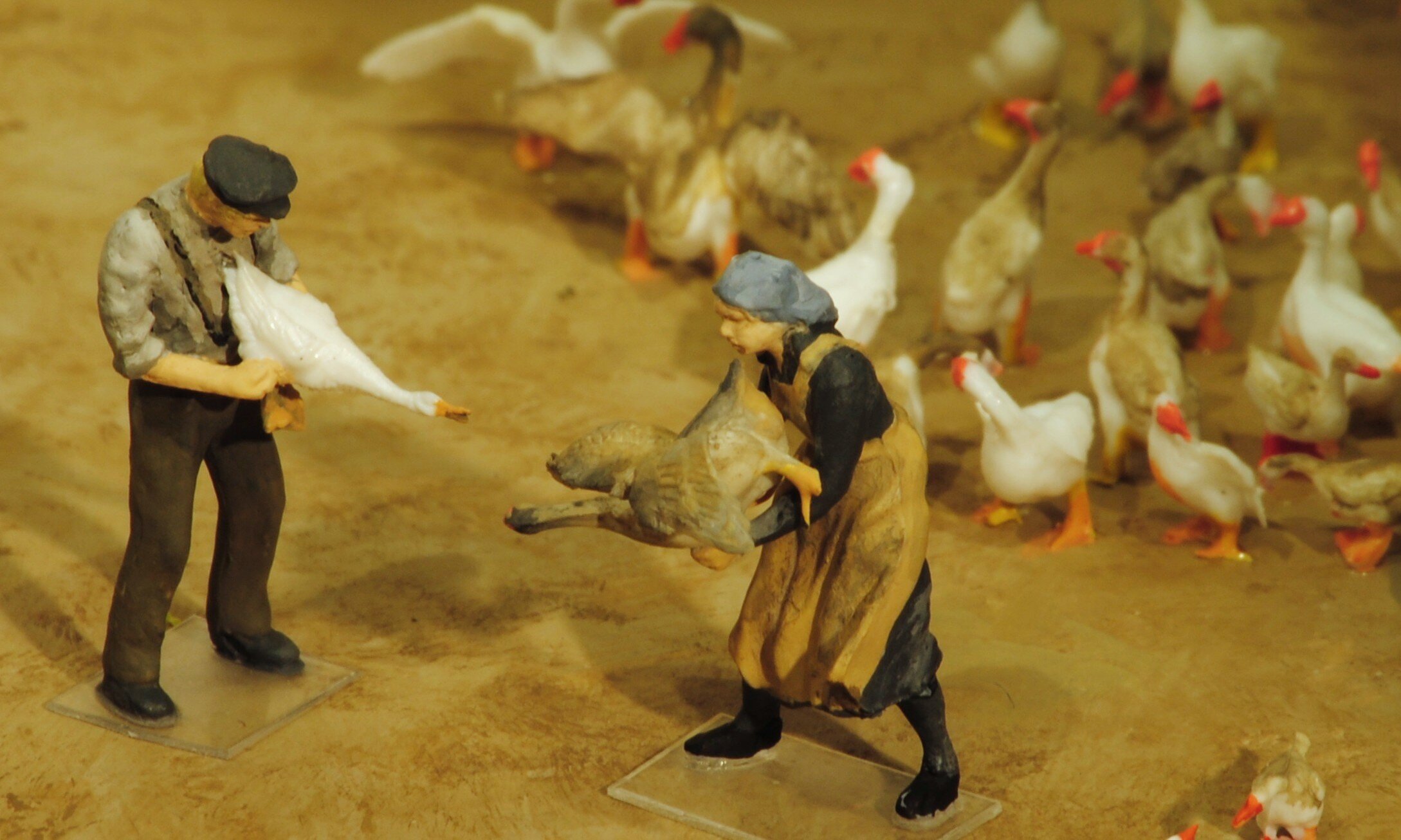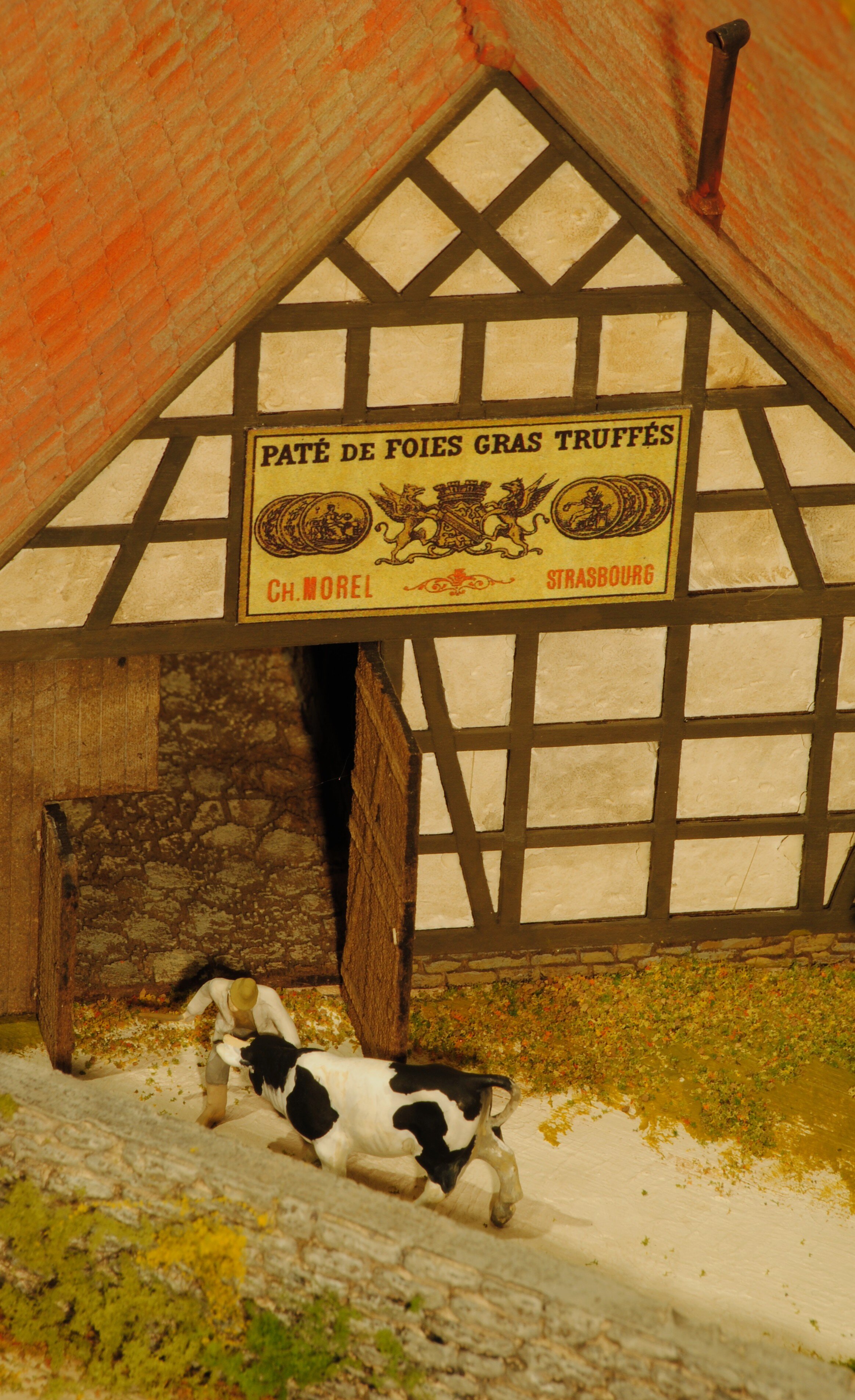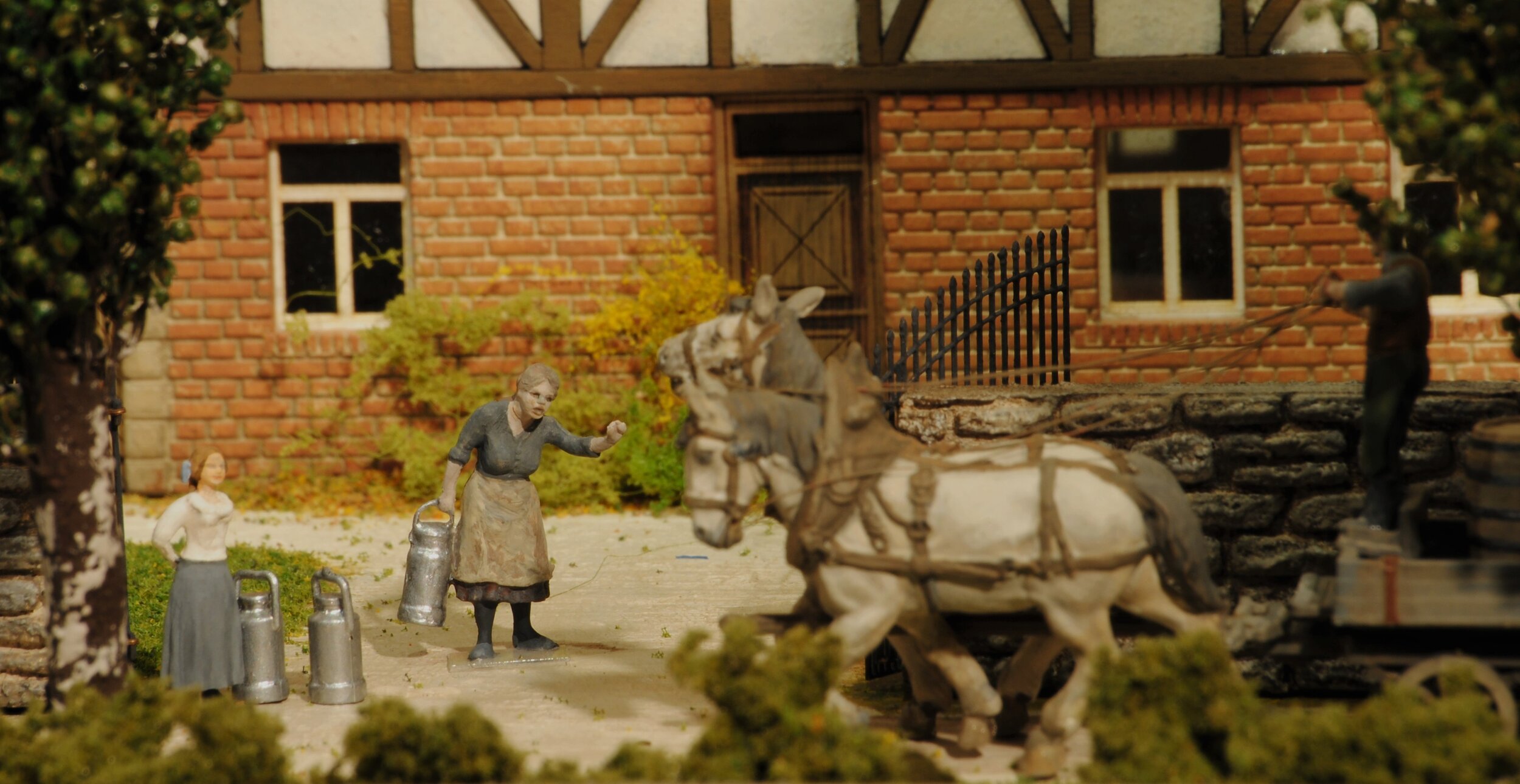
A Beloved Alsatian Product
The best paté de foie gras in the world
In 1914 paté de foie gras was an important gourmet delicacy. It’s still around today, but its price has lifted it beyond the reach of all but a few. The rather inelegant English words - goose liver paté – describe a culinary delight that has long been treasured the world over for its sublime flavor and texture. Though it’s produced in other parts of France, the Alsatians have always believed their paté to be the best, and much of the world agrees with them. Goose farms still dot the Alsatian landscape, providing the small, honored industry with its “raw material”.
Geese vary in color from pure white, to tan, to dark grey. Exceptionally strong, they can be aggressive creatures, meaning they must be handled with skill – even courage. No one enjoys being attacked by a goose.
Alsatian farms of modest size, like this one in “The Sarajevo 1914 Collection”, often fatten relatively small flocks of geese and sell them to the large processors, “Morel” in “Strasbourg”, for example. It’s interesting to note that while Strassburg is the official spelling of the city’s name under German rule, it’s usually spelled the French way by Alsatian producers of food products destined to be distributed throughout France and Europe. The preferred spelling offers an assurance that the product is actually French, even though the province it comes from in The Collection is a part of the German “Imperial Territories of Alsace and Lorraine”.
Down the lane, in front of the farmhouse, the milk is being put out for pickup by the wagon approaching from the right. With the milk from the other farms in the area, it’ll be taken to Strassburg by train for distribution during the night. Though it’s a Sunday, fresh milk cannot be allowed to spoil.



